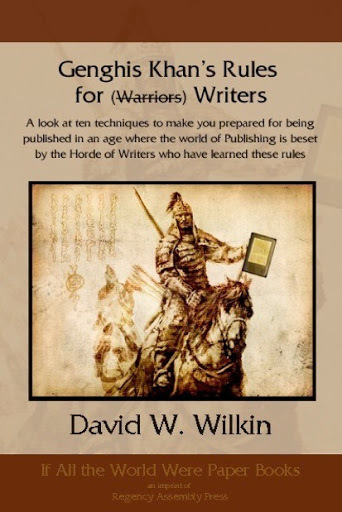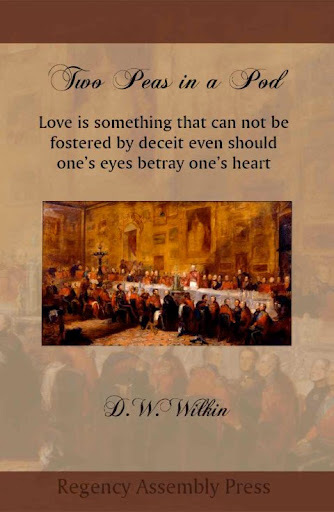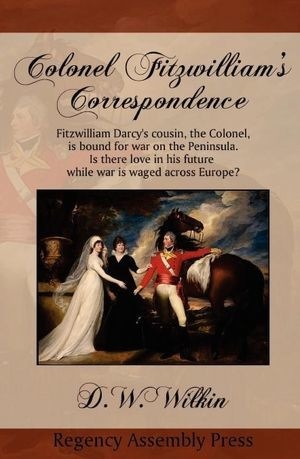D.W. Wilkin's Blog, page 9
December 12, 2016
Regency Personalities Series-Vice Admiral Samuel Hood Linzee
Regency Personalities Series
In my attempts to provide us with the details of the Regency (I include those who were born before 1811 and who died after 1795), today I continue with one of the many period notables.
Vice Admiral Samuel Hood Linzee
27 December 1773 – 1 September 1820
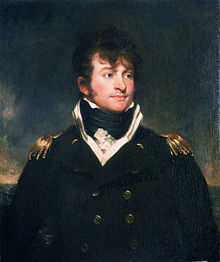
Samuel Hood Linzee
Vice Admiral Samuel Hood Linzee was born in Plymouth, Devon, the son of John Linzee and Susannah Inman, and named in honour of Lord Samuel Hood, who was married to his father’s cousin, Susannah. His father was a Royal Navy captain, and had served during the American War, commanding the sloop Falcon from October 1774 until after July 1776, and saw action at the Battle of Bunker Hill in 1775. Although his infant son Samuel’s name appeared on the ship’s muster roll as captain’s servant and senior clerk, it is highly improbable that Samuel was on board the ship, but it did count towards the years of sea time necessary for all candidates for a lieutenant’s commission. Samuel Linzee subsequently received his on 21 July 1790, aged only sixteen and a half. He was promoted to commander on 5 November 1793, and to post-captain on 8 March 1794, only two months past his 20th birthday, and given command of the 28-gun sixth-rate frigate Nemesis.
On 9 December 1795, the French frigate Sensible and corvette Sardine captured Nemesis while she was at anchor in the neutral port of Smyrna. Nemesis did not resist and Linzee protested the illegality of the action. The British frigates Aigle and Cyclops blockaded the three ships until Ganteaume’s squadron drove the British ships off. The French sailed Nemesis to Tunis in January 1796, but the British recaptured her on 9 March. Linzee travelled home via Venice, Vienna, Dresden, Prague, and Berlin, and eventually returned to England in a packet boat from Hamburg in mid-1796.
At 8 a.m. on 26 January 1801, Linzee, newly in command of the 36-gun frigate, Oiseau (the former Cléopâtre) sighted the French 36-gun frigate Dédaigneuse, which was bound from Cayenne to Rochefort with despatches. The Oiseau pursued Dédaigneuse alone until noon the next day when, with Cape Finisterre in sight, the frigates Sirius and Amethyst joined the chase. Eventually Dédaigneuse surrendered to the Oiseau around 2.45 p.m. on the 28th, and was taken into service in the Royal Navy.
Linzee commanded the 74-gun ship Zealous during the Battle of Copenhagen on 2 April 1801, and was in the fleet of Rear Admiral George Campbell which sailed from England to Port Royal in 1802, and returned to England in May of that year.
He commanded the 74-gun Warrior from early 1805 until April 1806, and was part of Sir Robert Calder’s fleet when he engaged a combined French and Spanish fleet at the Battle of Cape Finisterre on 22 July 1805.
In February 1807 Linzee was appointed commander of the 74-gun ship Maida. One of his first duties, on 6 March, was to sit on the court martial of Sir Home Riggs Popham after the failed invasion of South America. On 19 July 1807 he commanded Maida in the bombardment of Copenhagen and the capture of the Danish fleet.
Linzee went to command the Barfleur for a brief period in January and February 1809, the Triumph from 1809 to 1811, the Dreadnought from August 1810 to December 1811, Temeraire in March 1812, and then the Union from April to August 1812. He was appointed a Colonel of Marines on 20 July 1811.
Linzee was promoted to the flag rank of Rear Admiral of the Blue on 12 August 1812, then to Rear Admiral of the White on 4 December 1812, Rear Admiral of the Red on 4 June 1813, and finally to Vice-Admiral of the Blue on 12 August 1819.
Linzee died on 1 September 1820, at his home at Stonehouse, Devon, at the age of 46, after an attack of apoplexy caused him to fall from his horse a few days before. A monument can be found in the north aisle of the Church of St. Andrews, Plymouth.
Linzee first married Miss J. Clark, at the Cape of Good Hope, South Africa, in July 1799. She and her baby died during childbirth on 28 August 1800, at Greenwich. On 7 September 1802 Linzee married Emily Wooldridge, the daughter of Captain William Wooldridge, at St Andrew’s Church, Plymouth. They had nine children; the first three, all boys, were stillborn, while the fourth, named Samuel Hood Linzee, was born in August 1806, but died of smallpox on 26 December the same year. The fifth child, Emily Wooldridge Linzee, was born on 27 September 1807. The sixth, also Samuel Hood Linzee, was born on 19 December 1809, and was drowned off Cape Frio on 11 July 1831, aged only 22, while serving as a lieutenant aboard Warspite. The seventh child, John Linzee was born 22 September 1812, while the eighth, Susanna Inman Linzee, was born on 17 December 1815. The ninth and final child, Mary Ann Charlotte Linzee was born on 26 January 1818.


Rules for better writing from Genghis Khan
The Rules for Writers
Those who follow me for a long time know that I also write in other fields aside from Regency Romance and the historical novels I do.
A little while ago, before the end of 2011 and the 2011 NaNoWriMo, (where I wrote the first draft of another Regency) I started work on a project about writing.
The premise was what one should think about when starting and working on a project. I came up with 10 rules to follow in a quest to become a writer and tackle that novel.
Here are The 10 Rules:
1) Read like a writer
2) Have a good story
3) Your work will be Thematic
4) Plot: The seven deadly ones
5) Characters will carry your tale, near and far
6) Words are your warriors
7) Stories are structured
8) All tales building to a Crescendo
9) Genghis edits history, shouldn’t you as well
10) Act like a writer
So it is now released. For $4.99 you can get this treatise on honing your skills.
Barnes and Noble for your Nook
Genghis Khan came from the Steppes of Mongolia, a family torn apart by neighboring tribes, to unite those tribes, or defeat them, and then conquer the greater part of the known world. His heirs would continue his conquest right to the edge of western society. The world feared the Mongols, and Genghis. Now, you can benefit, as a writer from the lessons he has to impart on how, with the changing world of publishing, you can perfect your work and write not only good material for this new age of book publishing. But can write great work for this new age. 10 simple lessons, and you will be on your way to conquering the bookshelves of the 21st century. This short book will have you learning all you really need to know to elevate your writing to the next level. These simple lessons will start you on the road to better writing as a member of the Horde in no time.
Feedback
If you have any commentary, thoughts, ideas about the book (especially if you buy it, read it and like it
December 11, 2016
Regency Personalities Series-Rear-Admiral John Maitland
Regency Personalities Series
In my attempts to provide us with the details of the Regency (I include those who were born before 1811 and who died after 1795), today I continue with one of the many period notables.
Rear-Admiral John Maitland
1771 – 20 October 1836
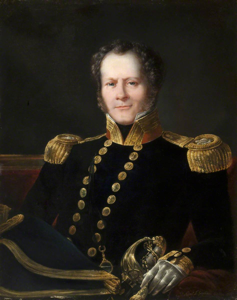
John Maitland
Rear-Admiral John Maitland was born in Scotland in 1771, the third son of Colonel the Honourable Richard Maitland, who was himself the fourth son of Charles Maitland, 6th Earl of Lauderdale. His mother was Mary Maitland, née McAdam, of New York City. John Maitland was born into a substantial naval dynasty. His uncle was Frederick Lewis Maitland, who was a captain in the navy, and his first cousin was Frederick Lewis Maitland, who reached the rank of rear-admiral. John Maitland also entered the navy, and by 1793 was a midshipman aboard John Jervis’s flagship HMS Boyne. Maitland was involved in the attacks on the French colonies of Guadeloupe and Martinique, often serving on shore with landing parties. In the assault on Fort Fleur d’Épée he was the first person over the walls, and came to the rescue of Captain Robert Faulknor when Faulknor was attacked by two Frenchmen. Maitland ran one through with a pike and went on to kill another seven or eight of the garrison. During the attack on Pointe-à-Pitre, Guadeloupe, Maitland took over command of the landing parties as an acting-lieutenant when all of the more senior officers had been killed or incapacitated by wounds or exhaustion.
He received his commission as a lieutenant on 20 July 1794, and returned to serve in home waters, initially aboard the 32-gun frigate HMS Winchelsea, under Lord Garlies. Maitland then followed Garlies into the 32-gun frigate HMS Lively, soon becoming her acting commander and sailing her to join Jervis’s Mediterranean Fleet. He continued to serve with considerable gallantry, capturing the French frigate Touterelle in 1795. An impressed Jervis promoted him to commander on 23 December 1796, appointing him to the sloop HMS Transfer. Maitland was moved to HMS Kingfisher in April 1797, and took her to cruise off Portugal. On 1 August though he was almost the victim of a mutiny. Taking a direct approach he gathered his officers and marines and attacked the mutineers with swords and cutlasses, killing and wounding several. This decisive action quashed the mutiny, and met with Jervis’s approval. He described Maitland’s actions as ‘Doctor Maitland’s recipe’, and advised that it should be adopted in future instances of attempted mutiny. A further promotion for Maitland followed, he was made post-captain on 11 August 1797 and was given command of HMS San Nicolas, one of the prizes captured by Nelson at the Battle of Cape St Vincent.
Maitland sailed the San Nicolas to Britain, where she was paid off at Plymouth on her arrival, and Maitland went ashore. He married Elizabeth Ogilvy on 22 April 1799, and by 1800 had returned to active service aboard the 36-gun HMS Glenmore in the English Channel. He moved to the 38-gun HMS Boadicea in 1803, and on 24 July 1803 he spotted the French 74-gun third-rate Duguay-Trouin and the 38-gun frigate Guerrière sailing off Ferrol, Spain. Maitland decided to test whether the French ships were armed en flûte and were being used as troopships, and closing to within range, opened fire. The French returned fire, revealing they were fully armed and manned, and Maitland broke off. The French pursued, but were unable to catch him. Maitland continued on in the Channel, but while sailing off Brest the Boadicea struck the Bas de Lis rock and was badly holed. She returned to Portsmouth and was back on station eight days later, having spent just three days in dock. He went on to have a successful cruise, capturing the 12-gun French Vanteur, and several merchants. Maitland and the Boadicea spent 1804 enforcing the blockade of Rochefort, followed by a period in the North Sea and off the Irish coast.
On 2 November he came across a squadron of four French ships of the line under Pierre Dumanoir le Pelley, that had escaped from the Battle of Trafalgar two weeks previously. Maitland fired rockets to attract a nearby British squadron under Captain Sir Richard Strachan, but subsequently lost the French in fog. Strachan was able to make contact with the French thanks to Maitland, and after engaging them in the battle of Battle of Cape Ortegal, captured all of the French ships. A few days later Maitland spotted and gave chase to a French frigate, eventually breaking off after two days pursuit due to the nearness of the coast. He later learnt that the French frigate had run onto the island of Groix. In the autumn of 1806 Boadicea was employed protecting the whale fishery in the Davis Strait. He escorted a convoy to Britain from Oporto, and followed this with service on the Irish station in 1807, blockading Le Havre. During this time the 14-gun French privateer General Concleux was captured, and Maitland left the Boadicea in 1808. He was appointed to the 98-gun HMS Barfleur in late 1813, spending the rest of the war aboard her in the Mediterranean.
Maitland married for the second time at Bath on 8 January 1820, this time to Dora Bateman. He was promoted to rear-admiral on 19 July 1821 and died at Montagu Square, London on 20 October 1836 at the age of 65.


An Unofficial Guide to how to win the Scenarios of Rollercoaster Tycoon 3
An Unofficial Guide to how to win the Scenarios of Rollercoaster Tycoon 3
I have been a fan of this series of computer games since early in its release of the very first game. That game was done by one programmer, Chris Sawyer, and it was the first I recall of an internet hit. Websites were put up in dedication to this game where people showed off their creations, based on real amusement parks. These sites were funded by individuals, an expense that was not necessarily as cheap then as it is now. Nor as easy to program then as it might be to build a web page now.
Prima Books released game guides for each iteration of the game, Rollercoaster Tycoon 1, Rollercoaster Tycoon 2 and Rollercoaster Tycoon 3 (RCT3) but not for the expansion sets. And unlike the first two works, the third guide was riddle with incorrect solutions. As I played the game that frustrated me. And I took to the forums that Atari, the game publisher hosted to see if I could find a way to solve those scenarios that the Prima Guide had written up in error. Not finding any good advice, I created my own for the scenarios that the “Official” Guide had gotten wrong.
Solutions that if you followed my advice you would win the scenario and move on. But if you followed the
“Official” version you would fail and not be able to complete the game. My style and format being different than the folks at Prima, I continued for all the Scenarios that they had gotten right as well, though my solutions cut to the chase and got you to the winner’s circle more quickly, more directly.
My contributions to the “Official” Forum, got me a place as a playtester for both expansions to the game, Soaked and Wild. And for each of these games, I wrote the guides during the play testing phase so all the play testers could solve the scenarios, and then once again after the official release to make changes in the formula in case our aiding to perfect the game had changed matters. For this, Atari and Frontier (the actual programmers of the game) placed me within the game itself.
And for the longest time, these have been free at the “Official” Forums, as well as my own website dedicated to the game. But a short time ago, I noticed that Atari, after one of its bankruptcies had deleted their forums. So now I am releasing the Guide for one and all. I have added new material and it is near 100 pages, just for the first of the three games. It is available for the Kindle at present for $2.99.
(Click on the picture to purchase)
Not only are all 18 Scenarios covered, but there are sections covering every Cheat Code, Custom Scenery, the famous Small Park Competition, the Advanced Fireworks Editor, the Flying Camera Route Editor which are all the techniques every amusement park designer needs to make a fantastic park in Rollercoaster Tycoon 3.
Scenarios for RCT 3
1) Vanilla Hills
2) Goldrush
3) Checkered Flag
4) Box Office
5) Fright Night
6) Go With The Flow
7) Broom Lake
8) Valley of Kings
9) Gunslinger
10) Ghost Town
11) National Treasure
12) New Blood
13) Island Hopping
14) Cosmic Crags
15) La La Land
16) Mountain Rescue
17) The Money Pit
18) Paradise Island


December 10, 2016
Regency Personalities Series-Amelia Matilda Murray
Regency Personalities Series
In my attempts to provide us with the details of the Regency (I include those who were born before 1811 and who died after 1795), today I continue with one of the many period notables.
Amelia Matilda Murray
30 April 1795 – 7 June 1884
Amelia Matilda Murray was born in Kenton to Lord George Murray and Anne Charlotte. Her eldest brother was George Murray who became the Bishop of Rochester. She and her mother became known to George III and as a consequence her mother became a maid in waiting to the Princesses Elizabeth and Augusta. Murray herself met George III.
She came to notice when she was chosen to be a Maid of Honour to the young Queen Victoria. She was one of the eldest of the young Victoria’s servants and she became known as the “Maid of Honour”.
In 1854 she set out on a tour of North America and Cuba where she indulged her interest in botany as she investigated the institution of slavery. She published a book in defence of slavery that was based around letters to her friend Lady Byron. Murray had even prepared sketches to illustrate her book but these were not used. Lady Byron had been an active abolitionist and she had attended the 1840 World Anti-Slavery Convention. Murray wrote “Slavery does for the negro what European schemers in vain attempt to do for the hireling. It secures work and subsistence for all. It secures more order and subordination also.” The reaction to Murray’s book caused her to resign her position as woman of the bedchamber. She later published two further works.
Murray died at her home in Glenberrow, Castlemorton in 1884.
Remarks on Education in 1847, 1847.
Letters from the United States, Cuba, and Canada 1856.
Recollections from 1803 to 1837, with a Conclusion in 1868 1868.
Pictorial and Descriptive Sketches of the Odenwald 1869


Two Peas in A Pod, A Regency Romance
Two Peas in a Pod has now passed the exclusivity to Amazon test and is available in wider release, electronically (digitally) for other readers now. We sold a few copies on Amazon but nothing to warrant an exclusivity period. Amazon is too big and too full of itself.
Two Peas in a Pod is still available as a Trade paperback click here to order Regency Assembly Press.
$3.99 for an electronic copy. The Trade Paperback, due to publishing costs and the cut that Amazon takes continue to see a Trade Paperback costing $15.99 (The much hyped royalties that we writers are supposed to get is nowhere near what the news reports say. Most of that price is taken by Amazon.)
iBookstore (These are my books
and still at Amazon
Here is a picture, which of course you can click on to go fetch the book:
Love is something that can not be fostered by deceit even should one’s eyes betray one’s heart.
Two brothers that are so close in appearance that only a handful have ever been able to tell them apart. The Earl of Kent, Percival Francis Michael Coldwell is only older than his brother, Peregrine Maxim Frederick Coldwell by 17 minutes. They may have looked as each other, but that masked how they were truthfully quite opposite to one another.
For Percy, his personality was one that he was quite comfortable with and more than happy to let Perry be of a serious nature. At least until he met Veronica Hamilton, the daughter of Baron Hamilton of Leith. She was only interested in a man who was serious.
Once more, Peregrine is obliged to help his older brother by taking his place, that the Earl may woo the young lady who has captured his heart. That is, until there is one who captures Peregrine’s heart as well.
There is a visual guide to Two Peas in a Pod 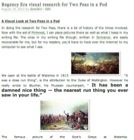 as well at Pinterest and a blog post here.
as well at Pinterest and a blog post here.


December 9, 2016
Regency Personalities Series-Cambridge Apostles
Regency Personalities Series
In my attempts to provide us with the details of the Regency (I include those who were born before 1811 and who died after 1795), today I continue with one of the many period notables.
Cambridge Apostles
1820 –
The Cambridge Apostles is an intellectual society at the University of Cambridge founded in 1820 by George Tomlinson, a Cambridge student who went on to become the first Bishop of Gibraltar.
The origin of the Apostles’ nickname dates from the number, twelve, of their founders. Membership consists largely of undergraduates, though there have been graduate student members, and members who already hold university and college posts. The society traditionally drew most of its members from Christ’s, St John’s, Jesus, Trinity and King’s Colleges.
The society is essentially a discussion group. Meetings are held once a week, traditionally on Saturday evenings, during which one member gives a prepared talk on a topic, which is later thrown open for discussion.
The usual procedure was for members to meet at the rooms of those whose turn it was to present the topic. The host would provide refreshments consisting of coffee and sardines on toast, called “whales”.
The Apostles retain a leather diary of their membership (“the book”) stretching back to its founder, which includes handwritten notes about the topics on which each member has spoken. It is included in the so-called “Ark”, which is a cedar chest containing collection of papers with some handwritten notes from the group’s early days, about the topics members have spoken on, and the results of the division in which those present voted on the debate. It was a point of honour that the question voted on should bear only a tangential relationship to the matter debated. The members referred to as the “Apostles” are the active, usually undergraduate members; former members are called “angels”. Undergraduates apply to become angels after graduating or being awarded a fellowship. Every few years, amid great secrecy, all the angels are invited to an Apostles’ dinner at a Cambridge college. There used to be an annual dinner, usually held in London.


A Trolling we Will Go Omnibus: The first three Fantasy stories of Humphrey and Gwendolyn
A Trolling We Will Go Omnibus:The Early Years
Not only do I write Regency and Romance, but I also have delved into Fantasy.
The Trolling series, (the first three are in print) is the story of a man, Humphrey. We meet him as he has left youth and become a man with a man’s responsibilities.
We follow him in a series of stories that encompass the stages of life. We see him when he starts his family, when he has older sons and the father son dynamic is tested.
We see him when his children begin to marry and have children, and at the end of his life when those he has loved, and those who were his friends proceed him over the threshold into death.
All this while he serves a kingdom troubled by monsters. Troubles that he and his friends will learn to deal with and rectify.
Here are the first three books together as one longer novel.
A Trolling We Will Go, Trolling Down to Old Mah Wee and Trolling’s Pass and Present.
Available in a variety of formats.
For $6.99 you can get this fantasy adventure.
Barnes and Noble for your Nook
The stories of Humphrey and Gwendolyn. Published separately in: A Trolling we Will Go, Trolling Down to Old Mah Wee and Trollings Pass and Present.
These are the tales of how a simple Woodcutter and an overly educated girl help save the kingdom without a king from an ancient evil. Long forgotten is the way to fight the Trolls.
Beasts that breed faster than rabbits it seems, and when they decide to migrate to the lands of humans, their seeming invulnerability spell doom for all in the kingdom of Torahn. Not only Torahn but all the human kingdoms that border the great mountains that divide the continent.
Feedback
If you have any commentary, thoughts, ideas about the book (especially if you buy it, read it and like it
December 8, 2016
Regency Personalities Series-Elizabeth Fenning
Regency Personalities Series
In my attempts to provide us with the details of the Regency (I include those who were born before 1811 and who died after 1795), today I continue with one of the many period notables.
Elizabeth Fenning
1792–26 July 1815
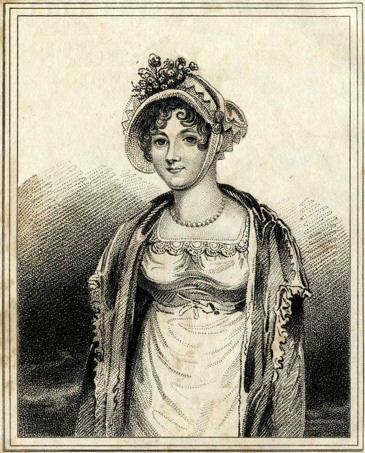
Elizabeth Fenning
Elizabeth Fenning was the daughter of poor parents, was from the age of fourteen employed in various situations as a domestic servant. Towards the end of January 1815 she entered the service of Orlibar Turner of 68 Chancery Lane, London, a tradesman, in the capacity of cook. On 21 March following, Turner, his son Robert Gregson Turner, and his daughter-in-law Charlotte, while at dinner, all ate of some yeast dumplings prepared by Fenning and immediately became very sick, though the ill effect was not lasting. It was discovered that arsenic had been mixed with the materials of the dumplings, and suspicion fell on Fenning.
Fenning was summoned to Hatton Garden police-court, and was committed for trial. The case came on at the Old Bailey on 11 April 1815, when Fenning was charged with feloniously administering arsenic to the three Turners with intent to murder them.
Evidence was brought against the prisoner. Fenning had asked and received leave to make the dumplings, and that she was alone in the kitchen during the whole time of their preparation; that the poison was neither in the flour nor in the milk; and that Fenning was acquainted with and had access to a drawer in her employer’s office where arsenic was kept. Roger Gadsden, an apprentice of Turner, had eaten a piece of dumpling after dinner, though strongly advised by Fenning not to touch it, and was also taken ill.
Fenning pleaded not guilty, and urged that she had herself eaten of the dumplings, a piece of testimony which was corroborated by Turner’s mother, who said that she had been sent for, and on arrival had found the prisoner very sick. The prisoner, protesting her innocence, tried to show that Mrs. Turner had a spite against her. Five witnesses were called, who gave Fenning a character of respectability and good nature. The recorder’s summing-up was strongly against the prisoner, and the jury finding her guilty she was sentenced to death. On hearing sentence pronounced she fell in a fit, and was moved insensible from the dock.
]
Popular opinion was largely in favour of Fenning’s innocence, and every effort was made by her friends and others to procure a remission of the sentence. On the day preceding that fixed for the execution a meeting was held at the home office to consider the case.
Lord Sidmouth, the Home Secretary, was out of town, but the Lord Chancellor Lord Eldon, the recorder, and Mr Becket were present, and concluded that there was no reason for interfering. Lord Eldon summoned another meeting in the evening, with the same result. On the following morning, 26 July, Fenning was hanged, in company with two other malefactors, Oldfield and Adams.
Intense public interest was excited, it being generally believed that Fenning was innocent, a belief which was strengthened by her declaration on the scaffold: ‘Before the just and almighty God, and by the faith of the holy sacrament I have taken, I am innocent of the offence with which I am charged.’ At her funeral, which took place five days later at St George the Martyr, Bloomsbury, the pall was carried by six girls dressed in white, and as many as ten thousand persons took part in the procession which was formed to the grave.
Samuel Parr and Charles Dickens believed in her innocence, as did John Gordon Smith. In an 1829 publication, Smith highlighted an article in the Morning Journal from March that year which details the death of Robert Gregson Turner in Ipswich Workhouse after confessing his guilt for the crime for which Fenning was hanged.
The author Sandra Hempel, who specialises in topics of health, has highlighted the Fenning case as one which led to the development and advancement of forensic evidence as a means of determining guilt in murder trials. Hempel contends that contemporary experts analysed the forensic evidence available to them and resultantly cast serious doubt on Fenning’s alleged guilt, only for the evidence to be ignored, largely as a result of the failings of the courtroom. The case received much public and academic attention and probably helped catalysed further scientific developments in the field of forensics.


A Jane Austen Sequel: Colonel Fitzwilliam’s Correspondence
Colonel Fitzwilliam’s Correspondence For your enjoyment, one of the Regency Romances I published.
It is available for sale and I hope that you will take the opportunity to order your copy.
For yourself or as a gift. It is now available in a variety of formats.
For just a few dollars this Regency Romance can be yours for your eReaders or physically in Trade Paperback.
Visit the dedicated Website
Barnes and Noble for your Nook or in Paperback
Amazon for your Kindle or in Trade Paperback
Witnessing his cousin marry for love and not money, as he felt destined to do, Colonel Fitzwilliam refused to himself to be jealous. He did not expect his acquaintance with the Bennet Clan to change that.
Catherine Bennet, often called Kitty, had not given a great deal of thought to how her life might change with her sisters Elizabeth and Jane becoming wed to rich and connected men. Certainly meeting Darcy’s handsome cousin, a Colonel, did not affect her.
But one had to admit that the connections of the Bingleys and Darcys were quite advantageous. All sorts of men desired introductions now that she had such wealthy new brothers.
Kitty knew that Lydia may have thought herself fortunate when she had married Wickham, the first Bennet daughter to wed. Kitty, though, knew that true fortune had come to her. She just wasn’t sure how best to apply herself.
Feedback
If you have any commentary, thoughts, ideas about the book (especially if you buy it, read it and like it

